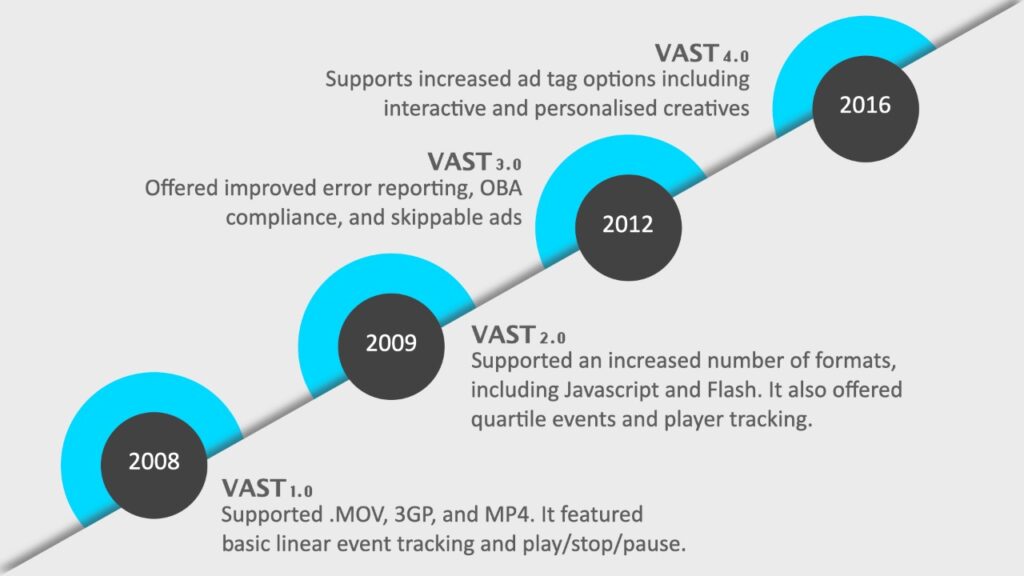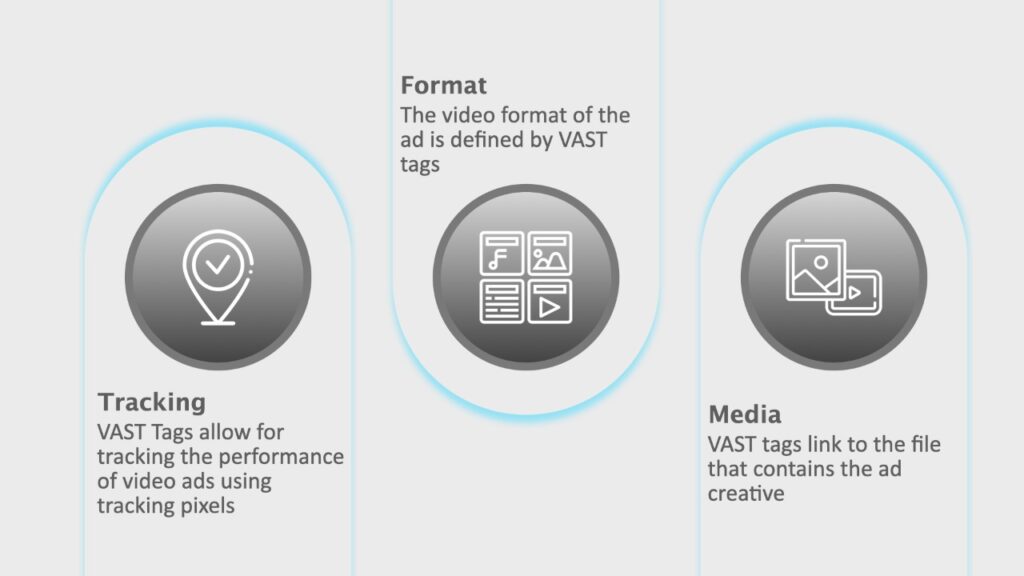VAST Tags are the latest buzzword in digital marketing. They have simplified video advertising by integrating video player communication with video ad networks.
Video ads are emerging as the most popular online medium of advertising.
Statistics say:
- Video ads reinforced brand trust in 58% of customers.
- Video ads left a positive impression of the product according to 71% of customers, as per the Hubspot report.
- Video advertising spends likely to reach $35 billion in 2024.
Programmatic advertising is emerging as a favourite online advertising medium. Online marketers need to get in sync with this exciting new technology and leverage it optimally.
An Introduction to VAST
VAST (Video Ad Serving Template) is defined by the IAB (International Advertising Bureau) as:
“VAST is a template for structuring ad tags that serve video and audio ads to media players. VAST transfers important metadata about an ad from the ad server to a media player.â€
It is also defined as “a standard XML-based ad response for in-stream video as well as an XML Schema Deï¬nition (“XSDâ€) for developers.â€
The IAB developed VAST in 2008 to serve the increasing demand for video advertising.
A VAST ad tag is a script that enables effective communication between ad servers and video players. It ensures quality video playback and a seamless experience for customers.
Video ad networks use VAST tags to instruct video players with a set of information related to the ad, including pricing, tracking information, duration, format, ad length, when to render the ad, how to retrieve the video ad, and the ad media.
Digital publishers have benefited due to VAST tags, which have led to a boom in video advertising. If video players can sync with VAST, they can play third-party ads regardless of the video ad networks.
How VAST Works: A Brief Overview For Marketers
VAST uses three processes for its working:
- The video player sends a request to the ad server to retrieve the
- After receiving the request, the ad server replies with an inline response that contains tracking URLs and the media file.
- After the video is played, tracking pixels are fired, and impressions are
What Are VAST Tags?
VAST tags are like third-party Javascript ad tags that work with video.
VAST uses XML markup schema to let video players understand elements of the ad, like:
- The ad format
- The destination URL
- The ad length
VAST Tags: 1.0 to 4.0

Evolution of VAST tag from 1.0 to 4.0
The Key Elements of VAST Tags

The ad tags can define the length of the ad, its dimensions, its type, and other pertinent information
How VAST Tags Have Transformed Digital Engagement
- They save time and money.
- They have reduced rendering and playback errors.
- They provide seamless communication between ad servers and video players.
- They give advertisers more control over the creation and implementation process of ads.
Three Ways To Create a Vast Tag
- Google Ad Manager
- Sign in to Google Ad Manager.
- Go to Inventory>>Ad Units.
- Click on “Tags†after locating the ad unit.
- Fill out the sections – Tag type, Tag option, and Tag results.
- Click the “Copy Tag†option.
Third-Party Tools
There is a wide range of offerings from third parties to create VAST tags. Video players need to support the specifications.
Mobile ads VAST tag generator is one such tool to create VAST tags.
Manual Creation
If you know XML and pre-defined parameters, manual creation of VAST tags is simple. First, you need to define the required parameter values and then create an XML using the content.
Key Takeaways
It’s been a long journey from 2008 to 2021, from VAST 1.0 to VAST 4.0.
This unique technology has played a pivotal role in transforming digital engagement via video advertising.
Although thirteen years isn’t a large chunk of history in the universe of business, VAST has displayed the beginning of a new era in advertising, especially with the internet going faster and faster from 4G speeds to 5G and beyond.
So get in-depth with this technology that is destined to ctrl-alt the marketing world forever.








Comments